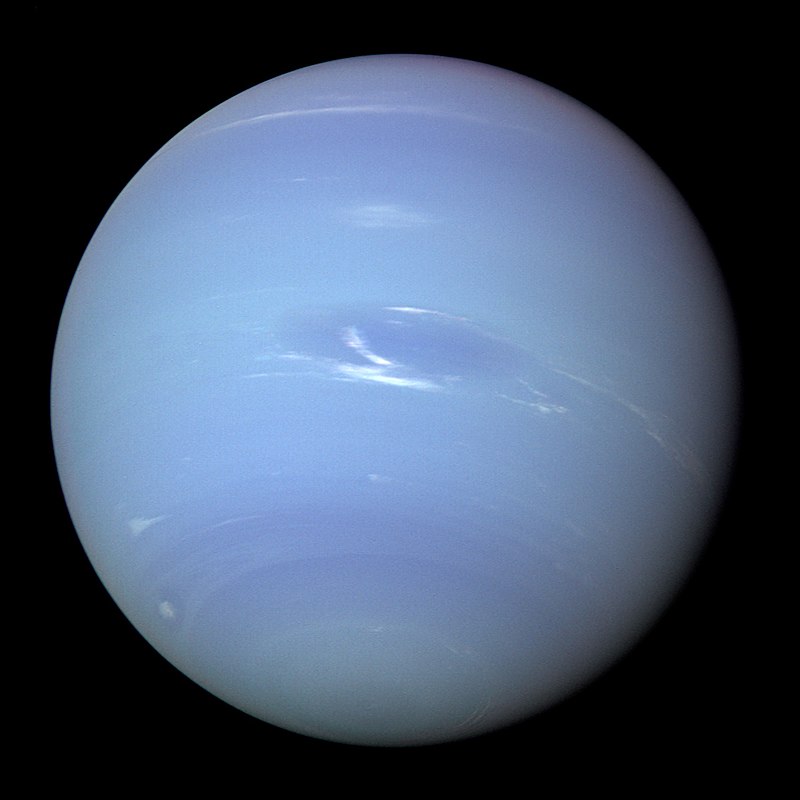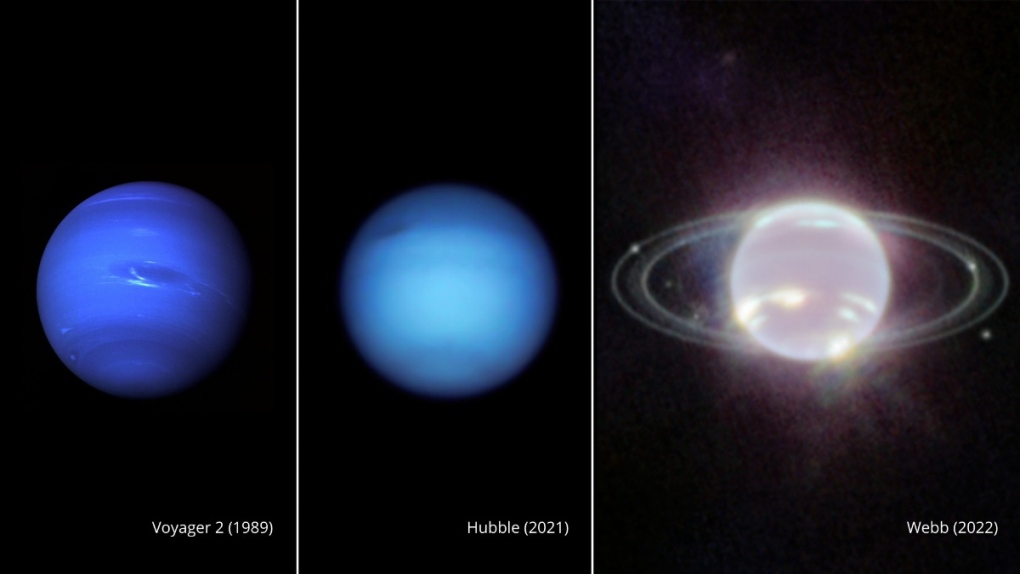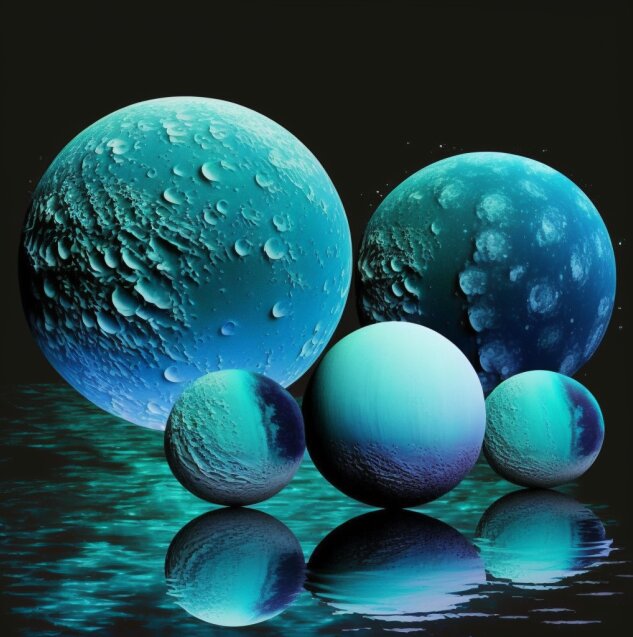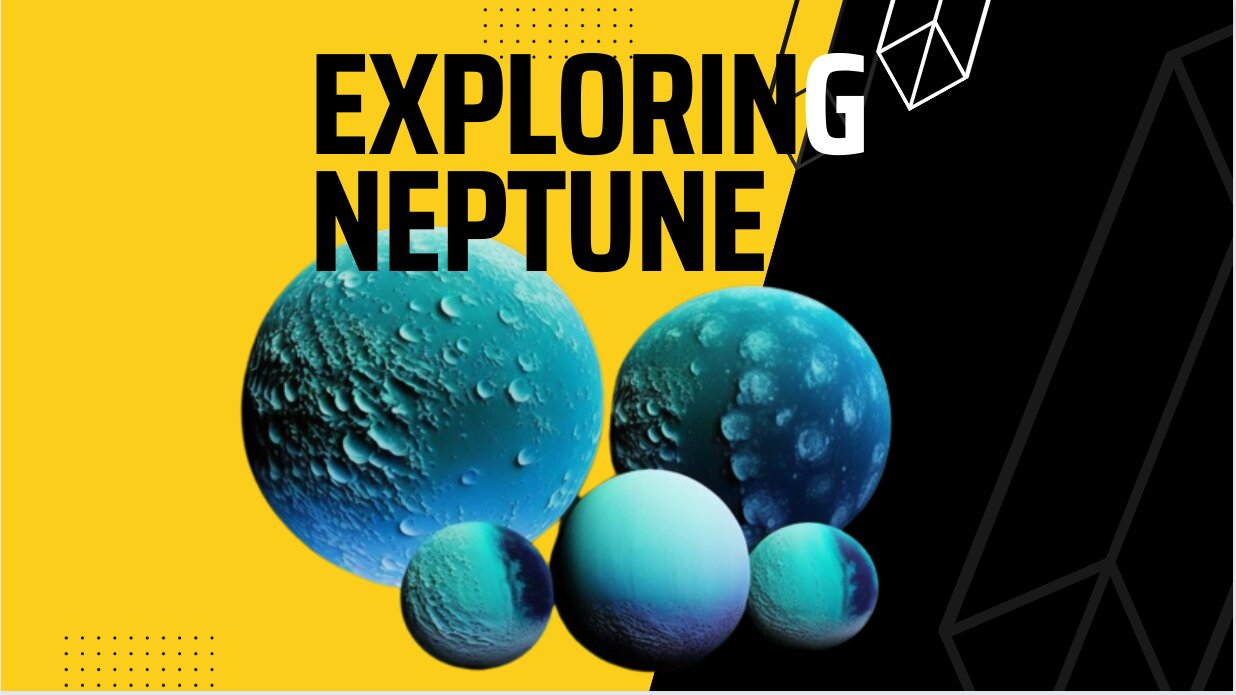As the eighth planet from the sun, many of us still don’t know much about Neptune. It is a planet that has been interesting to astronomers and stargazers for hundreds of years because it is made of blue gas and has many moons.
Even though it’s far away and hard to see, we’ve learned a lot about this exciting planet thanks to improvements in space exploration technology.
In this article, we’ll look closely at Neptune, exploring its dazzling features and delving into its fascinating history.
Exploring Neptune: The Dazzling 8th Planet from the Sun – Headings
Contents
Neptune’s unique features

Composition:
Neptune is mainly made of hydrogen and helium, with small amounts of methane, water, and ammonia. It is a Jovian ie. gas planet.
This composition is similar to that of its neighbor, Uranus, and distinguishes it from our solar system’s rocky (terrestrial) inner planets.
Blue Hue:
Neptune is known for its unique blue color, which comes from red light being absorbed by methane in the planet’s atmosphere. The planet’s blue color is stunningly beautiful and has drawn astronomers and space fans for hundreds of years.
Rings and Moons:
Neptune is also known for its complicated ring system, which is made up of 5 different rings. Even though they are not as noticeable as Saturn’s rings, they are still beautiful.
Neptune is also home to at least 14 moons, the largest being Triton.
History of Neptune
With his crude telescope, Galileo Galilei observed a “point” close to Jupiter’s conjunction between December 1612 and January 1613.
Today, we know that the “point” was actually where Neptune was at those times. It had just begun to move through the sky in a retrograde, or backward, direction as seen from Earth. Galileo, though, appears to have mistaken the planet for a star.
But also, Neptune was the first planet to be found through math rather than by looking at it directly.
Urbain Le Verrier, a French mathematician, noticed in 1845 that the orbit of Uranus was being changed by the gravity of a planet he didn’t know about.
Astronomer Johann Galle found Neptune, looking through a telescope, just one degree away from where he thought it would be based on Le Verrier’s calculations from 7.23.1846.
The discovery of Neptune is quite an interesting story. The British team’s disagreements over who discovered this planet first led to its discovery. But the end result is Brinta’s acknowledgement of George Airy’s claim that the French-German team was the first to discover Neptune on September 23, 1846.
And in this book, you can read the whole story.
How Neptune got his name
Because the planet is blue and is at the very edge of our solar system, it was named after Neptune, the Roman god of the sea.

Neptune’s Moons
Neptune is one of the planets at the very edge of our solar system. It has 14 strange moons, each with its own unique traits.
The largest of these moons is known as Triton, which holds the seventh position among the largest moons in our solar system.
It distinguishes itself from Neptune’s other satellites because it orbits in a retrograde direction, indicating it was likely captured by Neptune’s gravity rather than formed with the other moons.
Triton is also the coldest moon thing in our solar system, with a surface that can get as cold as -235°C. Even 10 degrees Celsius is colder than the coldest planet in the solar system.
Another noteworthy Neptune moon is Nereid, which ranks as the third-largest moon and has an eccentric orbit.
Proteus, on the other hand, is the second-largest moon with an irregular shape.
The smaller moons of Neptune have not yet been explored, but scientists are looking forward to learning more about these mysterious worlds.

Geological Features of Neptune’s Moons
Despite being relatively small compared to other moons in our solar system, Neptune’s moons contain an array of geological features. For instance, Triton has nitrogen ice covering its surface, and its geysers often erupt and spew nitrogen gas and dust into space.
Nereid is heavily cratered, indicating an asteroid and other object impact history.
Proteus has a rough terrain with numerous large impact craters and many ridges and valleys.
Exploration of Neptune’s Moons
While Neptune’s moons have been known for centuries, spacecraft have only recently explored them.
In 1989, NASA’s Voyager 2 flew past Neptune and its moons, providing detailed images and measurements of these distant worlds.
In 2015, the New Horizons spacecraft flew by Pluto and its moons. This gave us important information about how far out our solar system goes.
Missions to Neptune and its moons are being planned, and NASA and other space agencies are looking at a number of ideas.
These expeditions could provide even more detailed information on these puzzling worlds’ composition, structure, and history.
How many rings does Neptune have?

Neptune possesses a total of five celestial rings. These rings, which were first brought to our attention in 1984 by NASA’s Voyager 2 spacecraft, are named after esteemed astronomers who made significant contributions to our understanding of Neptune, including Galle, Le Verrier, Lassell, Arago, and Adams.
Neptune’s rings are far dimmer and more somber in color than the other gas giant planets, such as Saturn and Uranus.
Composed of a blend of rock, dust, and ice particles that range in size from minuscule grains to larger boulders, these rings are believed to be the remnants of asteroids, comets, and other debris that collided with Neptune’s moons.
The Adams ring, Neptune’s giant ring, has a radius of approximately 63,000 kilometers and is nearest the planet’s center.
Meanwhile, the outermost of the five rings, the Le Verrier ring is situated at a distance of roughly 53,000 kilometers from Neptune’s center and has a radius of around 110,000 kilometers.
The remaining three rings are significantly smaller and are found closer to the planet.
Even now, scientists are studying Neptune’s rings tirelessly to understand their composition and origins better.
In 2019, a new ring of dust was discovered encircling Neptune by researchers who were using data obtained from the Hubble Space Telescope.
This ring is believed to have formed due to a collision between two of Neptune’s moons.
The study of Neptune’s rings not only yields important insights into the history of the planet itself, but also provides valuable knowledge about the formation and evolution of our solar system.
As we continue to explore the outer edges of our solar system, we may uncover even more mysteries hidden within the rings of Neptune.
In conclusion, Neptune’s five rings, named after influential astronomers, are composed of rock, dust, and ice particles. These rings are fainter and more despondent in color compared to those of other gas ( Jovian planets ) giant planets, and the largest of them, the Adams ring, is located closest to the planet’s center. The rings of Neptune continue to be studied by researchers in order to learn more about their composition and how they came to be.
Overview of the Rings of Neptune
The ring system of Neptune is made up of an infinite number of particles, from tiny specks of dust to big chunks of frozen water, and it goes all the way around the planet.
Among these 5 rings (Galle, Le Verrier, Lassell, Arago, and Adams), the Galle and Le Verier rings are the most salient, with the Galle ring displaying the highest luminosity and being the most tightly packed.
On the other hand, the Argo and Adams rings are the farthest from the planet, and the U ring is the newest and seems less bright than the others.
Small amounts of silicates and carbon-based compounds are also found in these rings but don’t make up most of them. No one knows where the rings came from, but one idea is that a moon or moon-like object may have hit a comet or asteroid, which could have caused the rings to form.
Another theory says that Galatea, one of Neptune’s moons, may have helped make the ring system by how it pulls on Neptune.
The rings possess a unique attribute in their interaction with Neptune’s magnetic field.
When charged particles from the solar wind hit Neptune’s magnetosphere, they interact in a complicated way with the particles in the planet’s rings.
This can cause auroras and other interesting things to happen.
Unlike Saturn’s rings, which don’t change much in how they look, these rings change in how bright and thick they are over time.
This change is thought to be caused by how the particles that make up the rings move and interact with other objects in the sky.
Mission to the Neptune
A foray to the planet Neptune would constitute an immense and daunting challenge. The distance between Neptune and Earth depends on where they are in their orbits, but on average, it is about 2.7 billion miles.
This results in an extended and protracted duration for a spacecraft to reach Neptune, even with the utilization of the swiftest propulsion systems available presently.
Even though this mission is hard, there have been a few attempts to find out about Neptune’s secrets in the past. The Voyager 2 mission, which did a flyby of Neptune in 1989, was the first and best-known of these projects.
During this flyby, Voyager 2 took amazing pictures of the planet and its moons, as well as a lot of information about its atmosphere, magnetic field, and ring system.
Voyager 2 has helped us learn more about Neptune and its place in our solar system thanks to the valuable information it has brought back.

In recent years, there have been ideas for new missions to learn more about Neptune’s mysteries. One such proposition is the Neptune Orbiter mission, which would dispatch a spacecraft to orbit Neptune for several years.
The spacecraft would look at the atmosphere, magnetic field, and moons of the planet in a way that had never been done before.
The Neptune Triton mission is another idea. It would send a spacecraft around Triton, which is Neptune’s biggest moon. Scientists are especially interested in Triton because of its unique features, such as its backwards orbit and icy surface.
For either of these missions to happen, it would be necessary to use advanced propulsion systems and cutting-edge technology to deal with the harsh conditions at the edge of the solar system. However, the scientific dividends reaped from such missions would be monumental, providing novel insights into the development and evolution of our solar system, as well as the possibility of discovering unfamiliar forms of life in the far-flung recesses of our solar system.
In summation, embarking on a mission to Neptune would be an arduous yet fulfilling undertaking. It would necessitate cutting-edge technology and significant resources, but the scientific discoveries and advancements in our comprehension of the cosmos would make it well worth the effort. As we persist in pushing the limits of space exploration, a mission to Neptune presents a promising and tantalizing frontier for the future.


